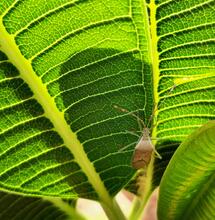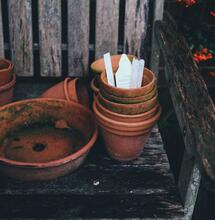
Welcome back to the Soft Secrets "Perfect Grow," where we show you how to learn to grow cannabis in 10 easy steps with the help of our friends at Royal Queen Seeds and Pro-Grower, Drew Anger.
If you have missed any episodes, fear not; the links to watch them are here. Picking seeds, Germinating seeds, Growing Medium and Choosing the perfect lights.
At the end of the last episode, we had just re-potted our plants, ready to go into the vegetative stage. After that, they will undergo a real growth spurt as they grow vertically and fill out laterally.
So, what do we need to know about Veg to create the optimum environment where your plants can thrive? Firstly, your humidity must be around 60%, with temperatures between 20-25C. We will increase our light intensity by 5-10% each week. The lights would have been at about 20% power starting as seedlings. By the middle of Veg, they should be at about 50% power; by the time Flower comes around, you should be running at about 70%. By back week 3-4 of Flower, we may see the lights reaching the maximum 100% as we push the plants for that extra boost in yield and quality.
In the first week of Veg, there is not much to do but leave your plants to acclimatise into their new homes and pick off any random yellowing or dying leaves. Then, after they are fully established, you can try "topping". Topping is essentially cutting off the main top shoot of the plant. This prevents all the plants' energy from being spent on vertical growth and instead channels it into horizontal development, making the plant wider and eventually producing more colas (big clumps of buds) which is what we are here for, after all. To top successfully, grab a clean pair of snippers, pull the leaves out of the way, and cut the leading shoot at the top in one clean cut about 3 or 4 inches down from the tip, and that's it.
In about a week or so, you should be able to see how much your plant has expanded horizontally, and it should appear bushier. This point is also an excellent time to start lollipopping, where you remove the very low-down, trim branches that are unlikely to yield much due to their position. It takes a few goes to get the hang of this but to be sure you don't cause any problems, take off the very low branches that will not get much light.
In this video, Drew, experienced in all things growing, has left at least 3 or 4 nodes at the top of each branch he keeps. These nodes will be where the plant's growth comes from moving forward. We will also do this again a few weeks after we flip our plants into Flower. At that point, we will further strip the plants until just the nodes we want to produce bud remain.
We are almost ready to change our light schedule and put these plants into Flower, but first, we will install some RQS trellis netting. This helps to give the plants some support as they pack on the weight and keep them from falling over or breaking branches. Plus, it offers an excellent opportunity to start training your plants.
Training is the same idea as Topping, but basically, we take each branch and stretch it over through one of the squares in the trellis. This helps widen the growth canopy, making it shallower and ensuring every branch and potential bud site gets an even share of the light.

This might not look great when you first do it but give your plants a few days to adjust, and you will notice that they start stretching back toward the light.
This is when you need to start thinking about switching your light to 12 hrs on/12hrs off, otherwise known as the Flowering light cycle. So yes, it's time to flip your plants into Flower.
Like and subscribe to the Soft Secrets YouTube channel and check out the next video in the series, where you will learn what to do and expect during the Flowering cycle, including how to transition your plants into this critical stage successfully.
Youtube link: https://youtu.be/HvqfA2FUucM



.png)